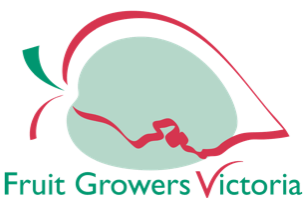
Understanding pot size
Currently we measure pots in a variety of ways but in short, small pots, tubes and punnets are normally measured by size (diameter) of the container and larger containers, grow-bags and rocket pots are commonly referred to by their volume. It is very confusing for landscapers sourcing plants for their clients to simply compare sizes – and therefore apples with apples - if supplier ‘A’ has 40cm stock and supplier ‘B’ has 50 litre stock.
So which pot offers better size value?
Like quality, container size is an important factor to understand. Assuming you have plants of equal quality, being able to compare pots for size value alone, is a significant problem for the industry. Add to this dilemma, the numerous pot styles available to the consumer that claim to be reflective of a certain common size, and the confusion instantly triples. From the Garden City Plastics catalogue, Australia’s biggest manufacturer of plastic pots, containers and bags for the horticultural and nursery industry, a 20cm pot can be supplied in five different styles with a varying volume of between 3.1 and 5 litres.
Could this be any more confusing? Well yes it can. Should you be sourcing material both locally and interstate, only the most pot weary members among us will be aware that a 50 litre container is sold in some areas of Australia as a 75 litre container. Similarly, a 40cm diameter pot in some areas of Australia is known as a 40 litre or 45 litre container, but it actually only holds only 27 litres.
These are only two examples that readily come to mind, but it highlights the point that being able to make a value call by pot size alone is a very complicated task.
A long time ago when Terracotta pots were the only pots readily available, identifying pot size was as simple as finding a number stamped into the bottom of the pot. Apparently, this digit referred to the number of pots that could be ‘thrown’ from a standard block of clay. In Australia before plastic pots but after terracotta, we sold plants in cans and tins; jam cans, fruit cans and kerosene tins. These were measured by volume such as one quart or one gallon. This made perfect sense at the time and was uniform across the market.
With the development of plastic containers for growing plants, initially with bags and then to hard wall pots, there has been no move to regulate product sizes. If you go and buy a bottle of water, in fact any liquid, there is a volume printed on the container you are looking to purchase. If you buy a powder or any other solid material from store or supermarket, the volume or weight is clearly printed on that container. Look at soap, beer, sugar, fuel - all have a printed indication of what you are buying in terms of weight or quantity.
In most other industries you are obliged to put the volume of what you sell on the container, and that in turn makes the manufacturer or supplier obliged to provide accurate, auditable information. In the nursery industry, volume is seldom listed and within the industry there are calls to now have this addressed and remedied.
With this standardisation of weight and volume comes the need to settle on a common language if you like - so we can compare apples with apples, which takes either diameter of pot or capacity of pot as its descriptor in all cases. An obvious place to start would be to talk in terms of litres, as this is a standard measure that we all understand readily, and a metric measurement that can be tested or checked easily. Once guidelines have been set and a language of litres embraced across the industry, it will become a requirement for all pots, bags and containers to advertise their size.
Receive all the latest news, product information, collections, projects, tips and special offers straight to your inbox each month or so.
Receive all the latest news, product information, collections, projects, tips and special offers straight to your inbox each month or so.
Treefinder can help you identify the perfect tree for your next project!
With over 400 tree varieties for review, the Treefinder app enables you to conveniently browse and compile a list of trees suitable for a number of common landscaping uses - from attracting birds to creating a formal screen or hedge. By selecting desired size, foliage, and a few categories, Treefinder opens up a world of possibilities.
Once you've found the perfect tree you can click through to our website for more information, availability and a quote.

We are specialists in the environmentally sustainable production of premium quality advanced landscaping trees and screens.
For more than 47 years Speciality Trees has been a leader in the production and supply of advanced environmentally sustainable, containerised landscape trees for local government, the landscaping industry and retailers.
Learn more







